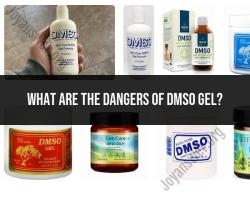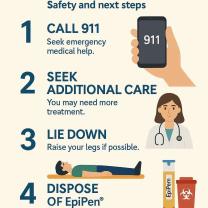Why does a blister fill with fluid?
A blister fills with fluid as part of the body's natural response to protect the underlying tissue from further damage and aid in the healing process. The formation of a blister is a complex mechanism, and it typically occurs in response to physical trauma, friction, burns, or other irritants. Here's why a blister fills with fluid:
Skin Injury or Irritation: Blister formation often begins with an injury or irritation to the upper layer of the skin, known as the epidermis. This can be caused by various factors, such as friction (e.g., from ill-fitting shoes), burns (e.g., from sunburn or contact with a hot surface), or a chemical irritant.
Inflammatory Response: When the epidermis is damaged or irritated, the body's natural defense mechanisms kick in. The injured area may become red, swollen, and painful. The immune system recognizes this as an injury and starts an inflammatory response.
Increased Blood Flow: In response to inflammation, blood vessels in the affected area dilate (widen), allowing increased blood flow to the site of injury. This helps deliver immune cells, nutrients, and oxygen to aid in the healing process.
Fluid Accumulation: As a part of the inflammatory response, the damaged blood vessels leak a clear fluid called serum. Serum contains proteins, electrolytes, and immune factors. This fluid starts to accumulate in the space between the layers of the skin, specifically between the epidermis (upper layer) and the dermis (lower layer). The accumulation of serum creates a bubble-like structure.
Protection and Healing: The fluid-filled blister acts as a protective cushion over the damaged area. It prevents further friction or trauma from reaching the raw or injured skin underneath. Additionally, the serum contains factors that aid in tissue repair and help fight infection.
Blister Formation: Over time, the fluid accumulation causes the top layer of the epidermis to separate from the underlying layers. This separation creates the characteristic raised, fluid-filled blister.
Resolution: As the underlying tissue heals, the body gradually reabsorbs the fluid within the blister. The top layer of skin eventually reconnects with the lower layers, and the blister dries out and flattens.
It's important to note that while blisters are a natural part of the body's defense mechanism and typically help with healing, they can become infected if not properly cared for. It's generally recommended to leave a blister intact whenever possible, as it provides a protective barrier. If a blister does break open, clean the area gently, apply an antibiotic ointment, and cover it with a sterile bandage to prevent infection. If you have concerns about a blister, especially if it becomes infected or does not heal properly, consult a healthcare professional for guidance and treatment.
The Science of Blisters: Why Do Blisters Fill with Fluid?
Blisters are fluid-filled sacs that form on the skin in response to injury. They can be caused by a variety of factors, including friction, heat, and cold.
When the skin is injured, the top layer of skin (epidermis) separates from the lower layer of skin (dermis). This creates a space between the two layers of skin, which fills with fluid from the dermis.
The fluid in a blister is a mixture of plasma, white blood cells, and other proteins. The plasma is the liquid portion of the blood, and it contains nutrients and antibodies that help to heal the wound. The white blood cells help to fight infection.
Fluid-Filled Blisters: The Mechanism Behind Blister Formation
The mechanism behind blister formation is not fully understood, but it is thought to involve a combination of factors, including:
- Increased vascular permeability: When the skin is injured, the blood vessels in the dermis become more permeable. This means that fluid can more easily leak out of the blood vessels and into the space between the epidermis and dermis.
- Reduced osmotic pressure: Osmotic pressure is the force that draws water from an area of low solute concentration to an area of high solute concentration. The fluid in the dermis has a lower concentration of solutes than the fluid in the epidermis. This difference in osmotic pressure causes water to move from the epidermis to the dermis, contributing to the formation of a blister.
- Proteolytic enzymes: Proteolytic enzymes are enzymes that break down proteins. When the skin is injured, proteolytic enzymes are released from damaged cells. These enzymes can break down the proteins that hold the epidermis and dermis together, contributing to the formation of a blister.
Blisters and Their Fluid Contents: The Physiology Explained
The fluid in a blister is a mixture of plasma, white blood cells, and other proteins.
- Plasma: Plasma is the liquid portion of the blood. It contains water, nutrients, antibodies, and other proteins.
- White blood cells: White blood cells are part of the immune system and help to fight infection.
- Other proteins: The fluid in a blister also contains other proteins, such as fibrinogen and albumin. Fibrinogen is a protein that helps to form blood clots. Albumin is a protein that helps to transport nutrients and hormones throughout the body.
The fluid in a blister can be helpful in the healing process. The plasma provides nutrients and antibodies to the wound. The white blood cells help to fight infection. And the fibrinogen helps to form a blood clot, which can help to stop bleeding and prevent infection.
However, the fluid in a blister can also hinder the healing process. If the blister is large or ruptures, it can expose the underlying tissues to infection. And the fluid in the blister can also put pressure on the underlying tissues, which can slow down healing.
If you have a blister, it is important to keep it clean and protected. You can do this by applying a bandage or dressing to the blister. If the blister is large or painful, you should see a doctor.













